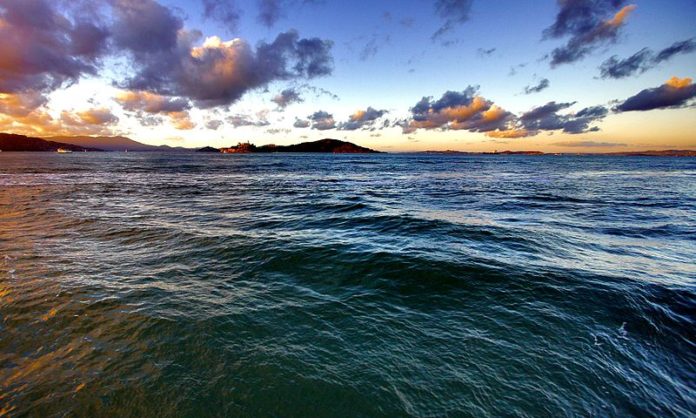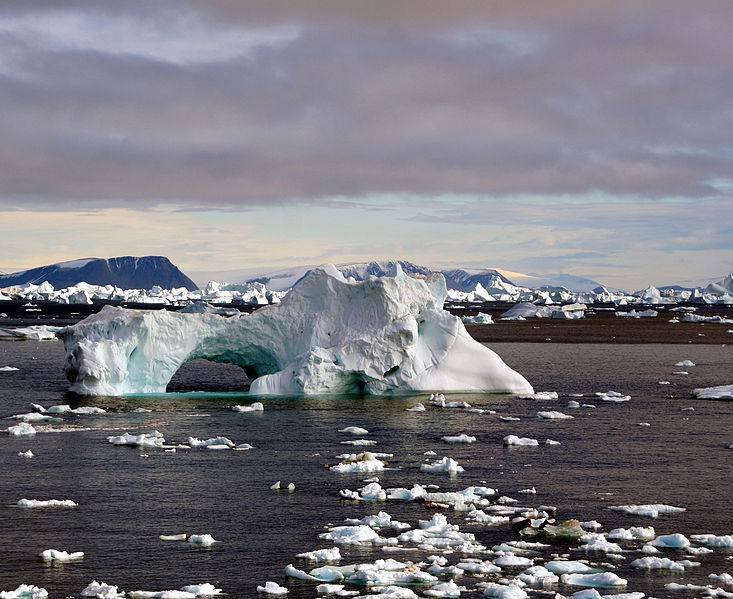
The majority of us are aware of climate change; a topic to which is widely regarded as
the greatest environmental challenge facing the world today, to which most are aware
of the potential negative effects associated with it.
The 2004 science fiction film the day after tomorrow was the premise of “tipping
points” in climate change, with notable scenes of New York City frozen over and
catastrophic storms. When released, scientists derided the film, insisting that the
confluence of events portrayed were unlikely or simply impossible.
Fast forward 12 years to 2016 and the idea of such devastating “tipping points” no
longer seem that improbable. The reality of climate change is unlikely to be a smooth
transition into the future; if a tipping point is triggered, it will have irreversible effects
and will result in significant negative environmental changes.
In a 2014 report, “Impacts, Adaptation, and Vulnerability”, produced by the ICPP,
outlined three of the most significant and biologically diverse systems already
showing early warning signs of their potentially catastrophic and irreversible tipping
points. The Amazon rainforest, the Arctic, and coral reefs. All three ecosystems in
which the majority of the worlds fauna and flora (including Homo sapiens) rely on.
Tipping Points in the Arctic
The arctic is one ecosystem that most would suggest to be effected most by climate
change. The National Snow and Ice Data Centre reported January 2016 to be a
remarkably warm month for the arctic showing an average increase of 6°C air
temperatures, although this could be linked to the El Nino our Earth is currently
undergoing but links to this still remain an active area of research. This has ultimately
reduced ice cover massively in the area, resulting in the threat to the survival for arctic
marine biota, the ICPP report states “the rapid reduction of summer ice covers causes
a tipping element that is now severely affecting pelagic [sub-surface] ecosystems as
well as ice-dependent mammals such as seals and polar bears.”
The retreating mass of the ice shelves as we know, will increase sea levels worldwide,
but the cascading effects do not stop there. Higher temperatures have meant
widespread thawing of permafrost, the frozen soil and water that dwells under the
Arctic ice landmass. Frozen soils contain more than twice the carbon present in the
atmosphere. As permafrost melts, the locked carbon is then free to be released in the
form of methane, a potent greenhouse gas with the potential of being much more
dangerous to the Earth’s atmosphere than carbon dioxide.
Coral reefs bleaching
Coral reefs cover 1% of the Earth’s surface, yet they are one of the most important
ecosystems producing roughly 50% of breathable oxygen and consume 30% of
anthropogenic produced carbon dioxide. They inhabit up to 25% of all marine life and
is essential in sustaining global ocean health and the aquaculture/fishing communities
that depend on the reefs as a significant part of their diet. It is estimated that 850
million people rely on coral reefs for food security.
As a result of increasing surface temperatures, sea level rising, and ocean
acidification, the Worldwide Fund for Nature published a study on the extent of the
declining coral reef biomass. The paper reported that reefs have declined by 50% in
the last 30 years and all reefs could potentially disappear by 2050 if current water
parameters continue to increase.
Reviewing history can give us an insight into what damage has already been done to
coral reefs. Captain Cook discovered the central Pacific Line Islands in 1777. He
describes the abundance of sharks biting the rudders and oars while on his boat
coming to shore. Shark abundance and predators alike are a great indication of a
healthy pristine environment, but if you were to visit the Line Islands for your 2016
summer holiday, you’ll be disappointed and met with few fish, limited coral
abundance and a dominance of algae. This is just one example of the devastating
effects of global warming and how quickly it can
destroy a healthy ecosystem.
Amazon drought
The amazon is well known for its extraordinary plant and animal diversity, and
considered as the epitome of a tropical rainforest. The dense tree’s and flora play a
vital role in sequestering carbon dioxide from the atmosphere and producing oxygen
as a bi-product. But for years, the increasing human population and demand for
logging, farming and ranching (many operating illegally) has increased anthropogenic
destruction such as deforestation. With the reclining forests struggling to keep up with
human needs, the Amazon has a new enemy to face. Tree mortality is on the increase
and is primarily being induced by severe drought and the increased forest fire risk that
comes with it.
The Amazon is no stranger to rain, in fact, it can rain year-round within the region,
yet there is a distinct wet season with heavy rainfall and a dry season, with, well you
guessed it, much less rain. A study conducted at the University of Texas found that
the dry season has increased by a week every decade since the 1980’s and annual fire
seasons have lengthened. “The dry season over the southern Amazon is already
marginal for maintaining rainforest,” says Rong Fu, head of the research team. “At
some point, if it becomes too long, the rainforest will reach a tipping point” and
vanish. In 2009 Britain’s famed Meteorological (Met) Office reported that the risk is
far greater than previously visualised. If there is an increase of 2°C of global
temperatures, as much as 40% of the Amazon rainforest would degrade within a
century. A 3 degrees C of warming could perish up to 75% and with 4 degrees, 85%
would be lost.
A similar scenario to the Arctic and coral reefs, the loss of flora and fauna in the
Amazon would have cascading effects throughout the ecosystems of the world.
Allowing these vitally important habitats to disappear is likely to induce further
climate change anomalies, heightening the intensity and sparking more tipping points
on a planet so close to the brink of extinction.
What now?
The concern for tipping points has only become serious and a central issue within the
past 6 years in the scientific community. It is unknown whether tipping points will be
triggered today or in the next century, but using models such as GIS, scientists have
been able to map and determine climate anomalies but as of yet, not with certain
accuracy. There is a 10% chance that feedback loops and tipping points will
commence within the next few years.
Have humans gone too far already and are we helpless to stop it? Time will tell, but
collectively, we can work together and save our planet from extinction. You can assist
in fighting against global warming personally and politically in the hopes of reducing
any more unnecessary degradation of these precious and fragile ecosystems.
You want to support Anonymous Independent & Investigative News? Please, follow us on Twitter: Follow @AnonymousNewsHQ
This Article (Is It Too Late? ‘Tipping Points’ And The Fate Of The Earth) is free and open source. You have permission to republish this article under a Creative Commons license with attribution to the author and AnonHQ.com.







were already decades past the tipping point people, why do you think all forms of media are tip toeing around the tulips trying to get everyone used to the idea that the planet has been ruined by us and that its completely irreversable.